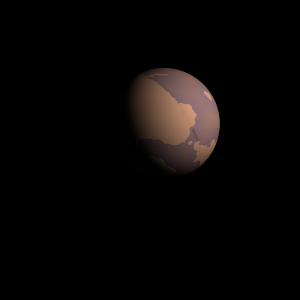|
|
Space Astro
|
Info for exoplanet "Naqfari"
| Scientific (actual) data |
|---|
| Name | K2-166 b |
| Planet status | Confirmed |
| Radius | 0.195 |
| Orbital period | 8.52695 |
| Semi major axis | 0.0858 |
| Discovered | 2018 |
| Updated | 2024-09-10 |
| Tconj | 2457590 |
| Impact parameter | 0.4 |
| Temperature (kelvin) | 1140 |
| Publication | Published in a refereed paper |
| Detection type | Primary Transit |
| Mass measurement type | Radial Velocity |
| Radius measurement type | Primary Transit |
| Alternate names | 2MASS J12204519+0216568 b, EPIC 201615463 b, EPIC 201615463.01, WISE J122045.15+021656.6 b |
| Star name | K2-166 |
| Right ascension | 185.19° |
| Declination | 2.28° |
| Mag j | 10.952 |
| Mag h | 10.715 |
| Star distance | 481 |
| Star mass | 1.07 |
| Star alternate names | 2MASS J12204519+0216568, EPIC 201615463, WISE J122045.15+021656.6 |
| Wikipedia article | K2-166 b |
Back
| |
| Fictional info (?) |
|---|
| Suggested name | Naqfari |
| Planet type | Cold planet |
| A prominent result is the "great white spot", a giant storm that is known to have existed for centuries since it was first seen by telescope. |
| Atmosphere | Ethane | 37% |
| Ammonia | 20% |
| Hydrogen peroxide | 17% |
| Hydrogen deuteride (HD) | 14% |
| Helium | 9% |
| Xenon | 2.1% |
| Sulfur dioxide | 0% |
| Atmospheric pressure | 0.8 bar |
 |
| No known satellites |
| Google search for Naqfari |
|
Website by Joachim Michaelis
|
|
|
|